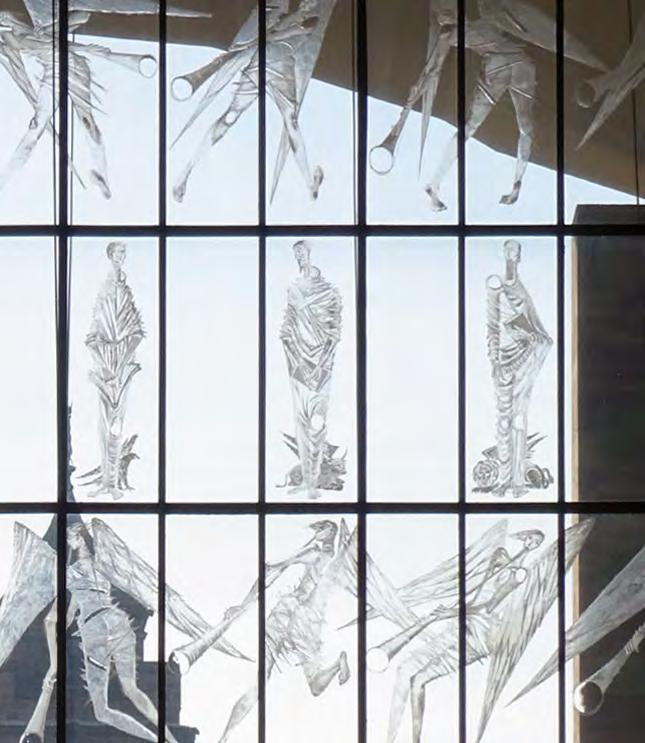CONSERVATION FRAMEWORK
5.2.3 PRINCIPLE 2: ENSURE ALL PROPOSALS RESPOND TO A CLEAR UNDERSTANDING OF THE NEED FOR CHANGE. Conservation holds great weight within planning policy and law, so any harm to the significance of Coventry Cathedral that might arise from change should be necessary and alternatives that avoid this should have first been considered. This approach is relevant under the system for Cathedrals as well as for external changes subject to planning permission.
Assessment questions: • Are the vulnerabilities of and risks to the area fully understood?
Overarching need, as well as the choice of specific locations for proposals should be explored and clearly articulated. For this, referencing back to the vison and values of the Cathedral as well as relevant documents such as the Mission Statement would help place the scheme within a holistic understanding of the Cathedral.
•
For any proposals, a statement of need, or a clear justification for why the work is needed, should be available to decision-makers. This is to ensure that risks to significance are properly managed and understood, and the potential impact of the options is tested. The use of feasibility studies or options testing is a useful way of setting out the advantages and disadvantages of a variety of schemes that provide the same solution in different locations or in different ways and will allow the necessity of any harm or benefits to be explored. As part of this iterative design process, measures to mitigate harm can also be considered.
•
Is more research or information needed?
o
Do the proposals seek to respond to issues in another area?
Is the potential and the opportunities of the area fully understood? o
Does the summary capacity for change table offer areas for development?
o
Action: Check the management gazetteer of this CMP.
What is the need for change? o
o
• Any proposed change should be considered in the context of the overall masterplan for the Cathedral or for that specific area to ensure that changes align with longer term objectives.
o
What are the benefits of the change? Consider economic, social and environmental benefits. Will these benefits ultimately outweigh any harm that might arise from the proposal?
Compliance with policy and guidance Care of Cathedrals Measure 2011: Chapter must seek and obtain approval before implementing any works that would materially affect the architectural, archaeological, artistic or historic character of the Cathedral church, its immediate setting or any archaeological remains. Church Buildings Council: A statement of needs explains your proposals having regard to your statement of significance and the impact of your proposed changes, setting out why the need cannot be met without making changes and why the proposed changes are necessary to assist worship and mission. NPPF paragraph 194: Any harm to, or loss of, the significance of a designated heritage asset (from its alteration or destruction, or from development within its setting), should require clear and convincing justification. Historic England Conservation Principle 3: Understanding the significance of places is vital Historic England Conservation Principle 5: Decisions about change must be reasonable, transparent and consistent
Is it necessary? o
Can the need be met without making changes?
o
Are the proposed changes necessary to assist worship and mission?
ICOMOS, Approaches to the conservation of 20th century cultural heritage 2017: Article 5: Acknowledge and manage pressures for change, which are constant. Article 6: Manage change sensitively. Article 8: Recognise when use contributes to significance and manage accordingly.
103














